UPDATED: August 27, 2022
The various filters of a reverse osmosis drinking water system reduce different impurities in your water. Reverse osmosis filters like any other water filter need to be replaced before they become ineffective so it is very important to know how often you should change your reverse osmosis filters.
Reverse osmosis filters should be replaced every 6 to 12 months on average. Reverse osmosis filters should be changed more or less often depending on the volume and frequency of water being used and the characteristics of the water being filtered.
Not all reverse osmosis drinking water systems are the same and every reverse osmosis system is used differently. It is important that you change your reverse osmosis filters and membrane as often as needed for your individual circumstances.
Here’s What We Will Be Covering:
- Why Reverse Osmosis Filters Need To Be Changed
- Reverse Osmosis Filter Change Quick Reference Table
- How Often To Change Your Reverse Osmosis Filters Based On The Characteristics Of Your Water And Your Water Usage
- How Often To Change Reverse Osmosis Filters (Light Usage)
- How Often To Change Reverse Osmosis Filters (Moderate Usage)
- How Often To Change Reverse Osmosis Filters (Heavy Usage)
- Where To Get Your Reverse Osmosis Filters For The Best Price
- Signs That You Need To Change Your Reverse Osmosis Filters
- How To Create A Reverse Osmosis Filter Change Schedule
- How To Change Your Reverse Osmosis Filters And Sanitize Your Reverse Osmosis System
Why Reverse Osmosis Filters Need To Be Changed Regularly!
In order for your reverse osmosis drinking water system to make your drinking water better, the filters within the system must be able to remove impurities from your water.
The filters of a reverse osmosis drinking water system purify your water by trapping assorted impurities in the various filters of the system, removing the impurities and making your drinking water better.
There comes a point when the filters of a reverse osmosis drinking water system have captured and removed all of the impurities that they can and are no longer as effective as they should be.
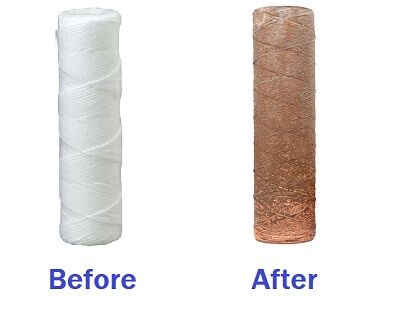
When the filters of a reverse osmosis drinking water system are no longer effective, your drinking water is no longer as pure as it should be.
Reverse Osmosis Filter Change Quick Reference Table
| Average Daily RO Use Per Person | 1 – 2 Adults | 2 – 3 Adults | 3 – 4 Adults | 5 – 6 Adults |
|---|---|---|---|---|
| Light (2 Cups Per Person) | 24 Months | 18 Months | 12 Months | 9 Months |
| Moderate (1/2 Gallon Per Person) | 18 Months | 12 Months | 9 – 12 Months | 6 – 9 Months |
| Heavy (1 Gallon + Per Person) | 12 Months | 9 – 12 Months | 6 Months | 3 – 6 Months |
Why Some Homes Should Change Their Reverse Osmosis Filters More Or Less Often Than Others.
- How many people use reverse osmosis water in the home
- Pre-reverse osmosis system water treatment
- Amount of Turbidity in the water
- Well water or pre-treated municipal water
- Type of filters used in your reverse osmosis system
When determining how often you should be changing the filters in your reverse osmosis drinking water system, we need to take into consideration the amount of water being filtered and the characteristics of your water and not just in terms of an average amount of time.
How many people use reverse osmosis water in the home

How many people using your reverse osmosis drinking water system along with what your reverse osmosis system needs to filter from your water can make a big difference in how often you should be changing your reverse osmosis filters.
Pre-reverse osmosis system water treatment
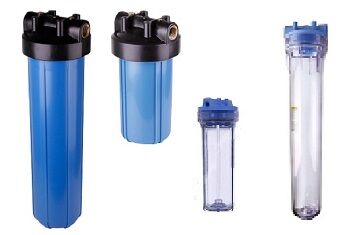
Having a properly working water softener and whole house water sediment filter will provide better water to your reverse osmosis system so the system’s prefilters will not have as much sediment to filter out which can make them last longer and soft water is better for the reverse osmosis membrane.
Amount of Turbidity in the water
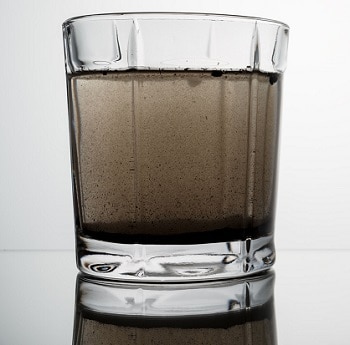
Turbidity is a measurement of how cloudy or murky water is due to particles in the water that cause light to scatter. (source)
Reverse osmosis filters that are filtering water with high turbidity may need to be changed more often than reverse osmosis filters filtering water with little turbidity.
Well water or pre-treated municipal water
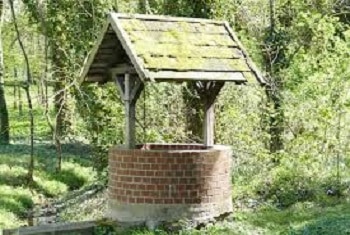
Water coming from a well can have varying amounts of sediment from one home to another, which means that the frequency of reverse osmosis filter changing can vary from one home to another.
Although municipal water is often low in sediment, it can often contain chlorine that has been used to make the water safe to consume. Varying levels of chlorine in municipal water from one home to another can mean varying effectiveness of chlorine removing carbon prefilters in a reverse osmosis system.
Type of filters used in your reverse osmosis system
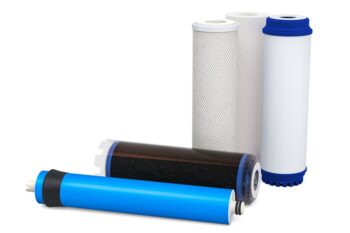
Most reverse osmosis systems use a very fine 5-micron water-sediment prefilter but filter quality can vary from one brand to another so not all reverse osmosis sediment prefilters will last for the same amount of time.
For reverse osmosis systems that need to remove chlorine from municipal water sources, a carbon water prefilter is used.
Reverse osmosis carbon prefilters may contain different amounts of carbon in them making some carbon prefilters more effective and longer-lasting than others.
How Often To Change Reverse Osmosis Filters (Light Usage)
When you are only using a small amount of reverse osmosis water each day, like for your morning coffee or tea.

Providing that you are using reverse osmosis water from your system regularly so that the water in the storage tank is being continuously refreshed, you may only need to change your reverse osmosis filters every 18 to 24 months.
Using just a small amount of reverse osmosis water on a daily basis may mean that you may need to change your reverse osmosis filters less often but using just a few cups of water each day from a tank storing 2.5 gallons of water could also lead to stagnant water.
Most standard reverse osmosis drinking water systems use a storage tank that will potentially hold approximately 2.5 gallons of stored water. This means that if there is only a small amount of water used on a regular basis, much of the stored water could become stagnant.
This is why I always recommend that you purge your reverse osmosis storage tank at least once a month when your everyday water usage is low. This will flush out the tank so that it will replenish with fresh filtered water to help prevent stagnation and possible bacteria growth.
If you choose to prolong reverse osmosis filter changes because you tend to use a small amount of reverse osmosis water each day, I highly recommend that you let your reverse osmosis storage tank empty at least once a month and be sure to sanitize your system every time you change the filters.
How Often To Change Reverse Osmosis Filters (Moderate Usage)
When you and your family are drinking reverse osmosis water several times per day.
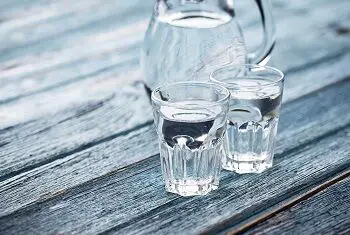
Moderate or (average) reverse osmosis water usage is helpful in keeping the stored reverse osmosis in your tank fresh and lowers the chance of bacteria growth in your entire reverse osmosis drinking water system.
The reverse osmosis filters in a moderate (average) water usage household should be changed every 12 months if not sooner depending on individual reverse osmosis system recommendations.
For moderate (average) reverse osmosis systems, it is commonly recommended to sanitize the system each time that you change the filters to prevent the growth of bacteria inside the system.
How Often To Change Reverse Osmosis Filters (Heavy Usage)
When you have an active family that needs plenty of reverse osmosis water throughout the day.

In homes with larger families or very active families that consume a high volume of reverse osmosis drinking water, you may need to change your reverse osmosis filters every 3 to 6 months to maintain high-quality water from your reverse osmosis drinking water system.
Sediment pre-filters and chlorine-reducing carbon pre-filters on reverse osmosis drinking water systems can become exhausted much faster when the demand for reverse osmosis water is high.
When a sediment pre-filter becomes clogged, it can restrict water pressure from getting to the semi-permeable reverse osmosis membrane. Without adequate water pressure, a reverse osmosis membrane can allow more impurities through it than it should.
An over-used carbon reverse osmosis pre-filter can allow the chlorine to get past it which can damage the reverse osmosis membrane.
Because bacteria are less likely to develop in a reverse osmosis system that is continuously flushed with fresh filtered water, you may not have to sanitize the system every time that you change the reverse osmosis filters although it is still a good idea.
Do You Need To Change All Of The Reverse Osmosis Filters Every Time?

Most reverse osmosis replacement filters are sold as a set, and this is for good reason.
All of the stages (Filters, Alkalinity Cartridges, UV Lamps, etc.) of a reverse osmosis system are equally important to deliver the high-quality drinking water that the system is designed to produce. In most reverse osmosis systems, “ALL” of the stages in a reverse osmosis system should be changed every time that you do a filter change.
In some reverse osmosis systems, the reverse osmosis membrane does not need to be changed as frequently as the filters and other stages of the system but you should still test your reverse osmosis water with a TDS (Total Dissolved Solids) meter every time you change your filters.
While the “PRE” filters of a reverse osmosis drinking water system may seem to be the most important filters to change in a reverse osmosis filtration system, the “POST” filters are equally important to your system producing high-quality drinking water.
On many popular reverse osmosis drinking water systems, the “POST” filters (filters that are after the reverse osmosis membrane) “POLISH” the reverse osmosis filtered water with activated carbon to remove additional impurities that could cause odor or odd taste.
Some reverse osmosis systems have a “Re-mineralization” post cartridge that actually adds beneficial minerals back into the reverse osmosis filtered water to improve the taste of the otherwise tasteless reverse osmosis drinking water.
Why does reverse osmosis water have very little taste? Check out my article ” What Does Reverse Osmosis Water Taste Like?“
Some of the more advanced reverse osmosis drinking water systems even use an ultraviolet light stage to sterilize the reverse osmosis filtered water just as it exits the reverse osmosis system and is dispensed from your faucet.
What Filters Need To Be Changed And How Often?
All “PRE” and “POST” filters of a reverse osmosis system should be changed during every filter change.
Only the reverse osmosis membrane may not need to be changed as often as the other filters in the system. Check with your owner’s manual for recommended reverse osmosis membrane changing frequency.
How To Know That You’re Getting The Right Filters For YOUR Reverse Osmosis System!
You should not only replace your reverse osmosis filters regularly, but you should also be sure to use exact-match replacement filters for your brand and model reverse osmosis system.
Although many reverse osmosis filter replacement sets may look similar to one another, there can be a difference in filter density and filter media within different filters.
Check your reverse osmosis system or owner’s manual for the brand and model number of your reverse osmosis system and purchase the proper set of replacement filters specifically designed for your system when possible.
You can find the most popular reverse osmosis replacement filter set on my “Reverse Osmosis Replacement Filters” page.
How Much Do Filters For My Reverse Osmosis System Cost?
Fortunately, the cost of most replacement reverse osmosis filter sets doesn’t seem to go up as so many other things do.
Many common brands of reverse osmosis replacement filters are available as complete sets with all the filters that you would need for a complete filter change.
- Popular 3-Stage Reverse Osmosis Replacement Filter Set Costs: $35 – $55
- Popular 4-Stage Reverse Osmosis Replacement Filter Set Costs: $45 – $90
- Popular 5-Stage Reverse Osmosis Replacement Filter Set Costs: $55 – $110
Although you do save money by purchasing your replacement reverse osmosis filters as a complete set, you can save even more money by purchasing them as a bundle for several filter changes, and in some cases, you can save even more if your system can use a “Universal replacement reverse osmosis filter set.
Signs That You May Need To Change Your Reverse Osmosis Filters Sooner Than Recommended!
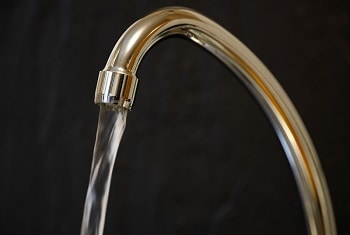
- Poor Water Pressure From RO Faucet:
As a sediment pre-filter collects sediment from your water, it can gradually restrict more and more water pressure going into your reverse osmosis system.
Although the initial stream of water from your faucet may be strong and plentiful, if the water pressure going into your reverse osmosis system is poor, the strength of the flow can drop quickly and the amount of water stored may decrease.
- Poor Tasting Water From Your Reverse Osmosis System:
Most reverse osmosis membranes require a minimum of 40 PSI (Pounds per Square Inch) to function properly.
If your reverse osmosis filters become clogged, the pressure going to the reverse osmosis membrane may not be enough for the membrane to reject as many of the impurities from your water as it is supposed to.
This can lead to poor tasting and even “Salty” tasting water from your system until the reverse osmosis filters are replaced.

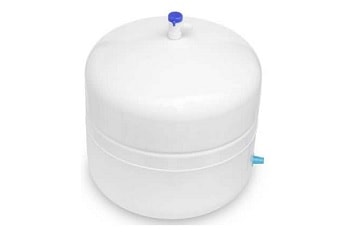
- Reverse Osmosis storage tank not filling:
A clogged filter due to sediment or a clogged reverse osmosis membrane due to hard minerals in your water can restrict water flow through the system and not provide enough water pressure to fill the reverse osmosis water storage tank.
Do Reverse Osmosis Filters Need To Be Changed Less Often With Municipal Water?
This is a common misunderstanding among people who receive municipal water in their homes.
Although municipal water is often free of sediment and has been treated with chlorine to make it safe to use, the chlorine used is usually NOT removed from the water before it reaches the homeowner.
Even if you do not taste or smell any chlorine coming from your reverse osmosis system, even small levels of chlorine in your water can damage the reverse osmosis membrane in your system and you may never know it.
When using a reverse osmosis system with municipal water, it is important to have an activated carbon pre-filter in your system to remove chlorine from your water before it reaches the delicate reverse osmosis membrane within the system.
This carbon filter should be changed on a regular basis along with all other filters in the system on a regular basis just like a reverse osmosis system that is being used for untreated water that is coming directly from a well.
Do You Need To Change Reverse Osmosis Filters More Often With Hard Water?
Hard minerals in your water will tend to pass through a sediment pre-filter and a carbon pre-filter will also do very little to prevent hard minerals from getting to the reverse osmosis membrane in a reverse osmosis system.
As hard minerals collect on a reverse osmosis membrane, they will clog the openings of the membrane restricting water flow, and can even tear at the membrane making the membrane lose its ability to filter out dissolved solids from your water.
Although you may not need to change the “PRE” and “POST” filters more often just because you have hard water, you may find that you will need to replace the membrane of your system more often than normally recommended.
Can You Clean And Reuse Reverse Osmosis Filters Instead Of Changing Them?
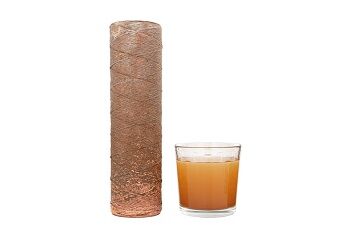
In some cases, you can thoroughly rinse a sediment pre-filter or soak a carbon prefilter to try and get a little more use from them, but I don’t recommend using any reverse osmosis filter longer than is recommended.
A reverse osmosis system is designed to make your water better and in order to do that, it needs to have properly working filters.
Most people use a reverse osmosis system for their drinking water and there can be no substitute for quality drinking water so I highly recommend that you always replace your reverse osmosis filters rather than attempting to reuse them.
Do You Need To Sanitize A Reverse Osmosis System Every Time You Change The Filters?
It is recommended by most reverse osmosis drinking water system manufacturers that you use a reverse osmosis sanitizer every time you change the filters of the system.
It is less likely that bacteria will grow in a reverse osmosis system that is filtering municipal water that has already been sanitized than water coming from a private well but using a reverse osmosis sanitizer is very easy and inexpensive so I do recommend sanitizing your reverse osmosis system every time that you change your filters.
How To Make Sure You Don’t Miss A Filter Change!
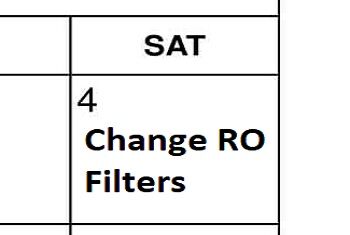
Once you have decided how often you need to change your reverse osmosis system filters, I recommend associating the changing of your filter with certain memorable occasions of the year for you.
Relating changing your reverse osmosis filters to whatever day or days of the year that will match up with the frequency of your reverse osmosis filter changes is a great way to ensure that you NEVER miss a reverse osmosis filter change.
A GREAT WAY to remind yourself when it’s time to change your reverse osmosis filters is to relate changing your filters to a specific day(s) of the year like:
- Birthdays: Yours, Spouse, Childs.
- Holidays: Memorial day, Labor day, Thanksgiving, etc.
- Anniversaries: Wedding, first date, etc.
- The first day of: (Spring, summer, fall, and winter.)
What If You Forget To Change Reverse Osmosis Filters?
For the most part, if you don’t change your reverse osmosis filters precisely as scheduled, your reverse osmosis system should be fine as well as the water coming from it.
Let’s face it, life keeps us busy and sometimes we can’t get to every task we need to do, no matter how important it may be.
If your reverse osmosis filter change is a month overdue, just make it a priority to get to it A.S.A.P., and don’t let it go for much longer. BUT!
If you find that you were supposed to change your reverse osmosis filters 6 months ago or even longer, stop using your reverse osmosis system altogether until you can get the filters changed, and be sure to sanitize the system before you start to use it again.
Shut the water off to your reverse osmosis system, shut off the valve on the storage tank or simply put a bag over the faucet to remind yourself that the reverse osmosis system is “OFF LIMITS” until you are able to get the filters changed and sanitize the system.
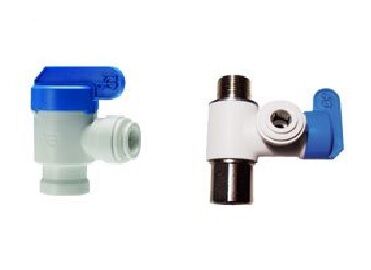
By shutting your reverse osmosis system down for use, you will be more likely to get to the changing and sanitizing of the system A.S.A.P.
Can You Change Reverse Osmosis Filters Less Often If You Have A Whole House Water Filter?

Having whole-house sediment or carbon filters will help to make your water better for use in your reverse osmosis system but they are no substitute for changing the filters that are specifically designed to be used in your reverse osmosis system.
Having additional water pre-filtering before your reverse osmosis system is beneficial but that doesn’t mean that you should delay changing your reverse osmosis filters on a regular schedule as well.
How Long Can Reverse Osmosis Filters Last Before They Absolutely Need To Be Changed?
This is an impossible question to answer because every reverse osmosis system is different and every situation is different.
“I in no way condone or suggest that it is safe to consume water from a reverse osmosis system that has not had its filters changed at least as often as recommended by the manufacturer of the system.”
Can I Change My Reverse Osmosis Filters Myself?
ABSOLUTELY!
Changing the filters on your reverse osmosis system yourself is much easier than you may think.
Your reverse osmosis system should have come with a filter wrench specifically designed for your system and you can easily order replacement filters online and have them on your doorstep in just a few days.
Follow my instructions on “HOW TO CHANGE YOUR REVERSE OSMOSIS FILTERS” carefully, and you should have your reverse osmosis filters changed and your system sanitized in no time.
Check Out This Video On How To Change The Reverse Osmosis Filters On A Popular iSpring Reverse Osmosis System!
How Often Should You Change Kinetico Reverse Osmosis Filters?
Kinetico reverse osmosis filters are designed to be changed after 500 gallons of water have been filtered.
At this point, the post-filter will shut down and the water flow will drop to a trickle.
There is no accurate way to be sure “EXACTLY” when your Kinetico reverse osmosis filters will need to be replaced, but some Kinetico reverse osmosis systems use a blue indicator to show the approximate life left in your systems post filter.
The indicator starts off toward the top of the spyglass when the post-filter is new and then works its way down as the filter’s capacity diminishes.
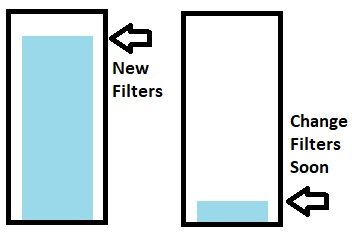
To Sum Up:
In most cases, you should change your reverse osmosis filters every 6 to 12 months on average.
In situations where the water usage from the reverse osmosis system is low, you may only need to change your reverse osmosis filters every 18 to 24 months but this is NOT actually recommended.
For HIGH water usage, you may need to change your reverse osmosis filters as often as every 3 to 6 months to keep your system working correctly.


Can you recommend a decent filter set? This will be our first time replacing them.
Thanks for all of the info above. I will be using all of this as a resource.
Hello Donna and thank you for the question.
Every system is different and some systems can use different combinations of filters, so you should contact the manufacturer of your system to determine the correct filter set for your specific needs.
I hope this was helpful
Paul